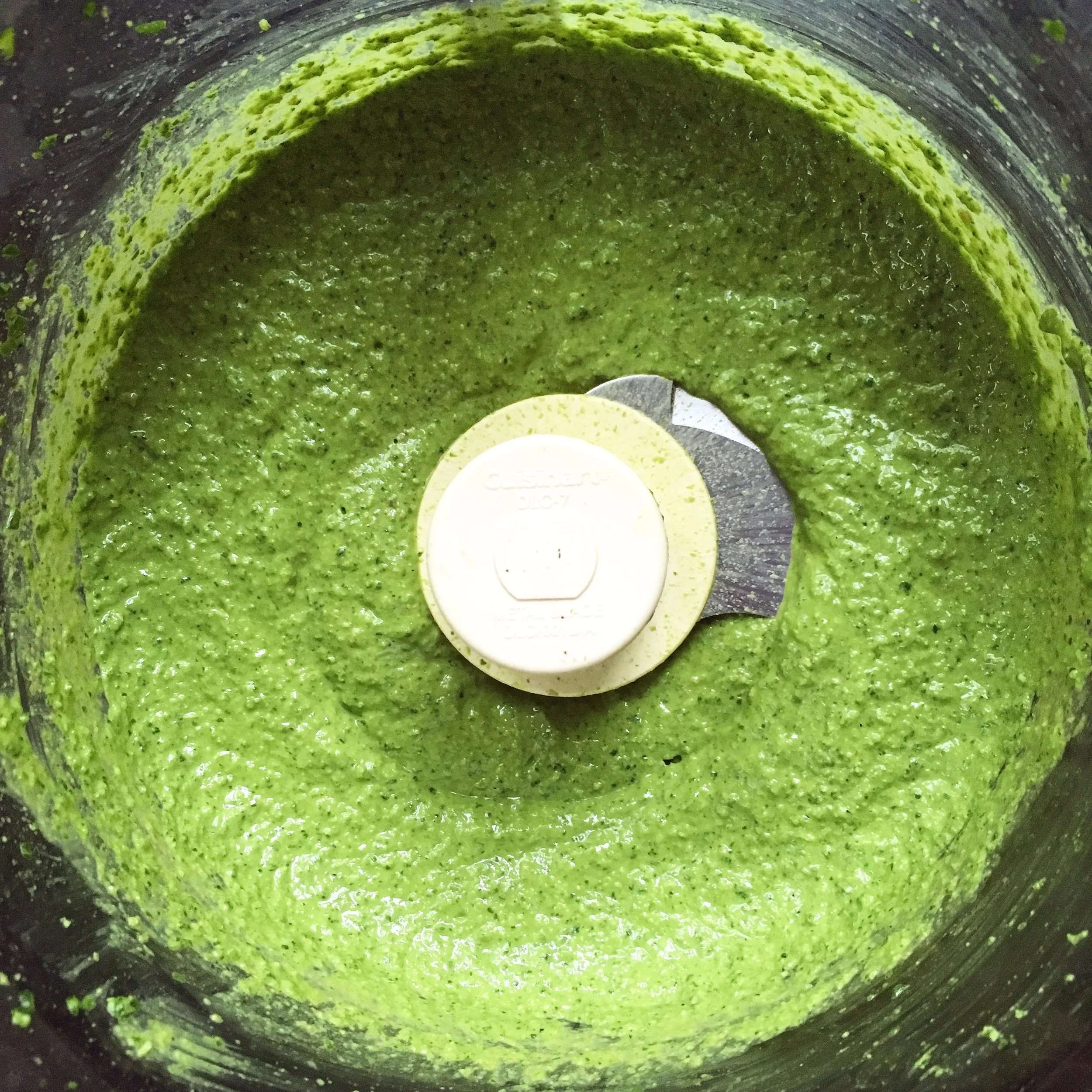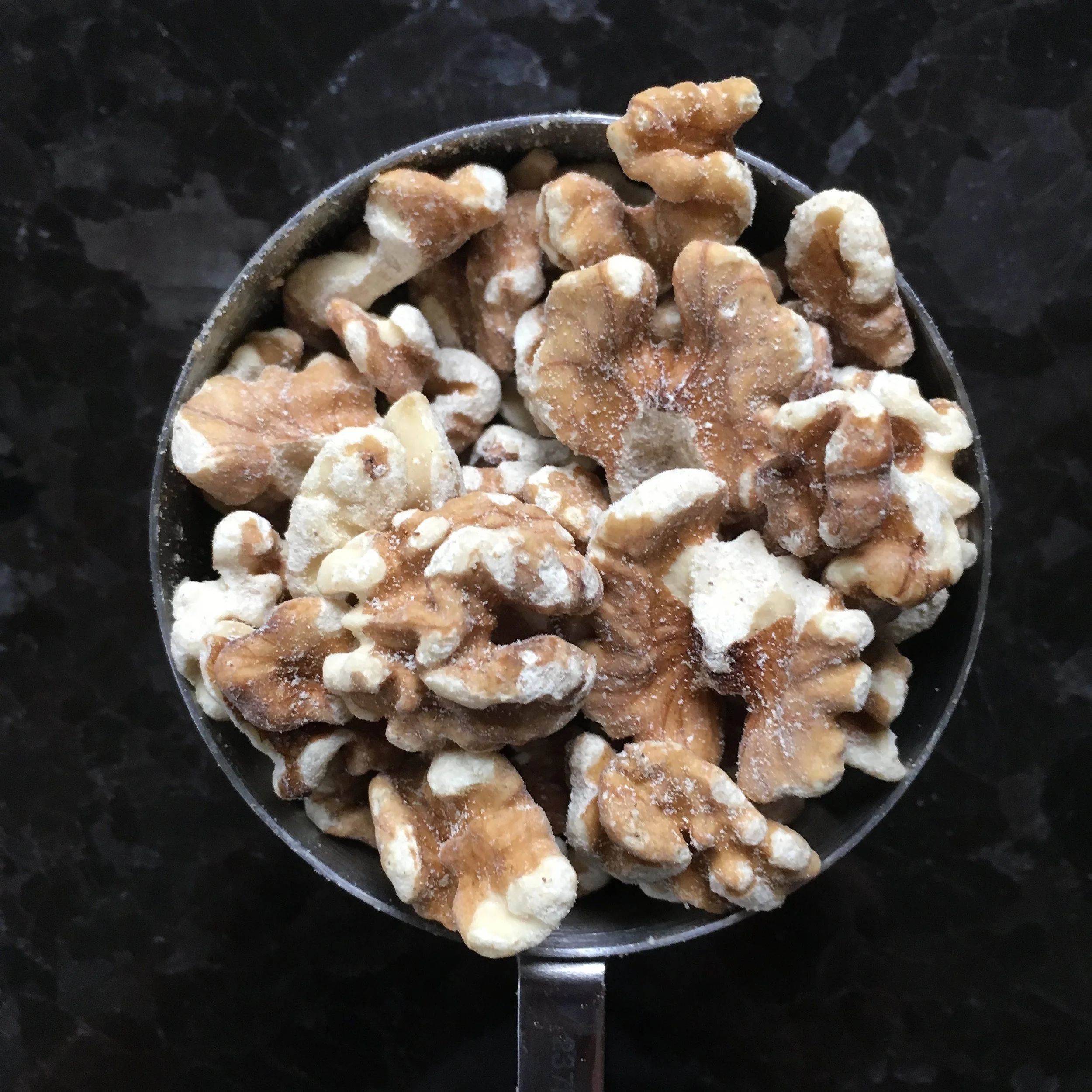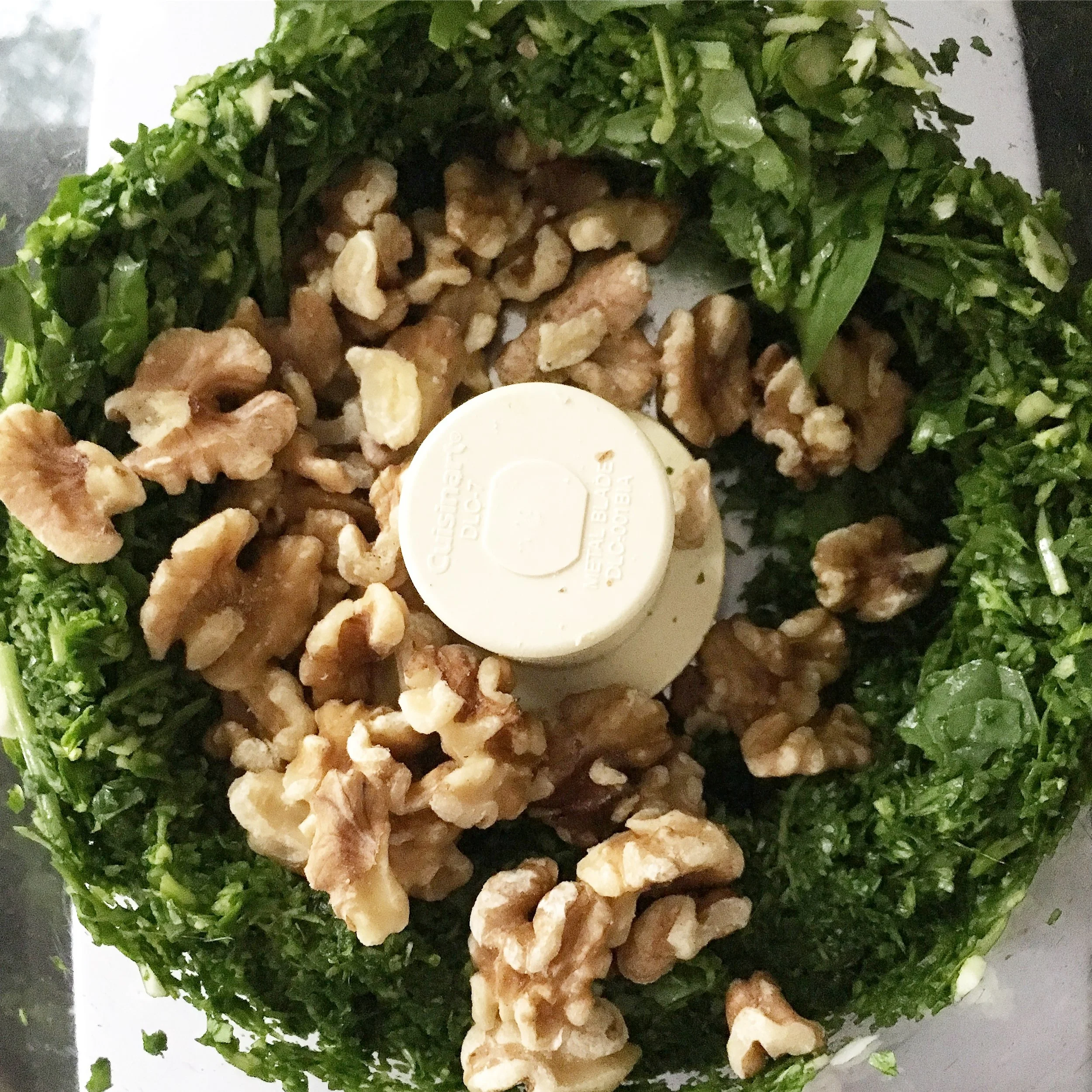A Practical Pesto

This is not a foodie's pesto.
It does not use fragrant, fresh from the garden basil. It does not call for pricey, precious pine nuts. It does not require your finest olive oil or heaps of freshly grated Parmigiano Reggiano cheese.
It is not the most authentic, the most transcendent, the most memorable-amazing-incredible-I-feel-like-I-am-in-Genoa pesto you will ever eat.
This pesto is for when you bought that great big package of baby spinach with the ambition of daily salads for lunch, but reality had different plans, and now you've got heaps of spinach about to wilt into goo in the crisper drawer.
This pesto is for when the thought of paying an ungodly amount of money for pine nuts makes your wallet cry for mercy, and you remember the bag of walnuts rattling around in your freezer.
This pesto is for when you or someone you love could use a bit more green in their diet (or, like, any green at all), and you think that maybe, just maybe, the green will go down easier if it's mixed with garlic and then dolloped all over pasta.
This is not a foodie's pesto. It is a practical pesto. A use-what-you-got, keep-it-cheap, try-to-up-the-nutrient-content pesto.
Spinach and walnuts are the primary ingredients, but ingredients already gracing the kitchen could (and should) certainly be substituted. It it a practical pesto, after all. Think baby kale or arugula for the spinach, almonds or pecans for the walnuts.
But what would one do with so much pesto, you may ask? Is it really practical to make this much pesto? Indeed, it is! There are so many options.
There's the aforementioned pasta, of course. Toss with roasted potatoes or sweet potatoes served under a crispy fried egg. Spread on pizza crust topped with fresh mozzarella and shaved asparagus. Mix it with mayo, slather on sandwiches, and and fall in love. Or combine the pesto with butter, roll it into a log using wax paper, and let it chill. Cut lovely little pats off this log, and put them on top of warm bread/sizzling steak/fresh out of the pan fish. Watch them melt. Devour.
But there's more! Toss it with other roasted vegetables, like beets, carrots, eggplant, or mushrooms. Serve a bowl a soup with a small spoonful of it swirled throughout. Add more olive oil as well as some vinegar or lemon juice to it, and dress a crispy, crunchy romaine salad.
All things are possible with a practical pesto.
As written, this recipe is vegan. If you prefer cheese in your pesto, stir in grated Parmesan or Romano to taste after adding in the olive oil, and reduce the salt a bit. I like to store some of the pesto in the fridge to use soon and portion the rest out into an ice cube tray to use in the future. Once it's frozen solid in the tray, you can pop out the cubes and transfer them to a freezer bag or container. Defrost your frozen pesto cubes in the refrigerator or on 50% power in the microwave. Half a cube + about a cup of whole grain pasta = my 7 year old's favorite lunch to take to school.
A Practical Pesto
Ingredients:
1 cup shelled walnuts, walnut halves, or walnut pieces
8 cups lightly packed baby spinach
3 big cloves of garlic, peeled
3/4 teaspoon coarse salt
1/2 teaspoon ground pepper
3/4 cup olive oil
Directions:
Place the walnuts in a small skillet over medium-low heat. Heat, stirring frequently, until very lightly browned and fragrant, about 4 minutes. Don't get distracted! Nuts burn easily. Burned nuts are sad. Remove walnuts from the skillet to a bowl and let cool slightly.
Place the spinach in the bowl of a food processor and process, scraping the sides with a spatula and gently packing it down as needed until it is all finely chopped. If your food processor is not large enough to accommodate all the spinach, start with half and then add more in increments until all is processed. Add the walnuts, garlic cloves, salt, and pepper. Process again until finely chopped, stopping to scrape the sides of the bowl once or twice.
With the motor of the food processor running, stream in olive oil until pesto is thick, slightly loose paste. Store in the refrigerator for a few day or freeze for future use. Yield: about 2 cups.





